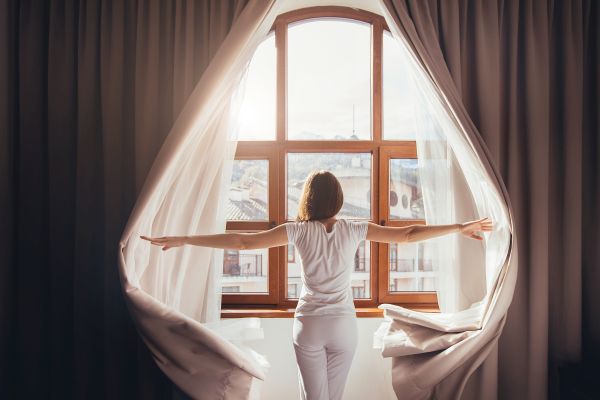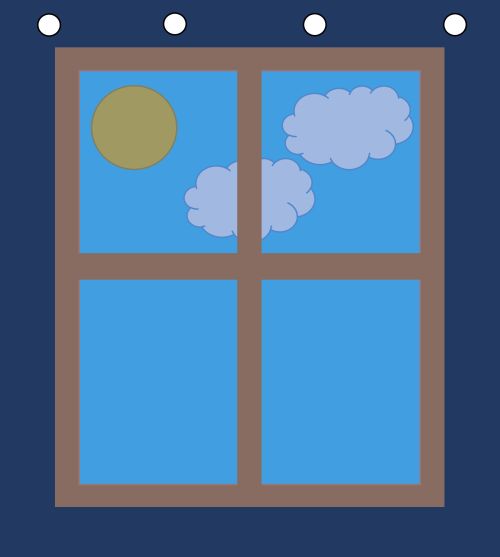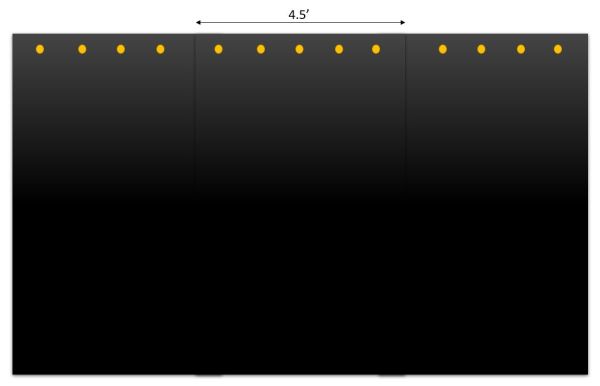No products in the cart.
How Do Sound Blocking Curtains Work?

23
Nov
If you’ve ever had a problem with noisy neighbors, street noise, or any other annoying exterior noise, you might’ve already looked into better soundproofing your home. Some of the articles you read might suggest spending thousands on brand new double-paned windows, and others may recommend more affordable options such as soundproofing curtains, also known as sound blocking curtains. If you don’t have the budget for new windows, or the time to have them installed, sound blocking curtains can provide significant sound reduction and can be installed within 1-2 hours. Sound blocking curtains also perform just as well, and sometimes better than double-pane windows, but how do they actually work?
Science Behind Sound Blocking Curtains
Sound blocking curtains are made using a material known as Mass Loaded Vinyl, which is typically used in commercial soundproofing projects. Mass Loaded Vinyl is a solid, but flexible material that can be used on its own to block sound, or it can be placed within a wall to increase that wall’s soundproofing abilities.
We use a bit of a less heavy duty MLV with a sound transmission classification (STC) of 21. This means that on its own, the MLV in the curtains can block about 21-25 decibels of sound, which usually translates to a 60%-80% reduction in the sound. This rating for mass loaded vinyl and other soundproofing materials is determined using lab tests. As with most soundproofing materials, it is much harder for MLV sound curtains to block low frequency noises, they can typically reduce low frequency noise by about 40%-50%.

How to Soundproof a Window with Soundproofing Curtains
Noisy neighbors and street noise are very common exterior noise issues that people deal with, and it’s the main reason customers purchase our curtains. Most outside noise is going to get into your house through the windows, because glass has a much lower STC rating than the exterior walls of your house. So, don’t worry about trying to soundproof your walls, because that can get messy and expensive, and it probably isn’t necessary.
Sound blocking curtains look a lot like regular curtains, but they are a little less aesthetic. If you’ve seen mass loaded vinyl before, you know it’s not a decorative material, so we cover our soundproofing curtains in cotton canvas fabric, which is available in multiple colors.
A soundproofing curtain hangs with hooks right above a window, and should completely cover the window with some overlap when closed. They can be rolled up and secured with a strap at the top when you don’t need to be using them. Soundproofing Drapes are a more aesthetic option, as they look and function more like traditional curtains, and they block as much sound as a standard soundproofing curtain.
The MLV at the core of our soundproofing curtains and drapes is what works to block, or deflect, outside noise. Some people confuse soundproofing curtains with acoustical curtains, as acoustical curtains are typically made from heavy fabrics, but they only work to absorb echo. No matter how thick or heavy the fabric is, it won’t be able to block sound, since fabric is porous and sound will always be able to pass through it.
Outdoor Sound Blocking Panels
While normal soundproofing curtains work to soundproof the inside of your house, they’re not suitable for outdoor use. The inner standard MLV core would break down in extreme heat and cold, and the outer fabric would not stay clean. If you like spending time in your backyard, but the noisy neighbors and traffic noise prevent you from being able to actually enjoy your time outside, there is an outdoor soundproofing solution for you.
Fence Blokker is a 1 lb/sf Reinforced Mass Loaded Vinyl that is able to be used outdoors, so you can created a soundproofing privacy fence. As opposed to the thinner MLV used in sound blocking curtains, Fence Blokker has an STC rating of 27, and can reduced unwanted noise by about 80% when used correctly.
In order for Fence Blokker to be most effective, the fence it’s applied to should be anywhere between 6′ and 12′ tall, and should be taller than the noise source you’re dealing with. Fence Blokker comes in 4.5’x30′ rolls, so typically we would cut the roll into sheets (using a razor blade) the same height as the fence, and end up with sheets that can be hung vertically. Fence Blokker can be grommeted along the top edge and secured with zip ties to chain link fences, or using hooks or nails on wood or vinyl fences. Be sure to overlap adjacent panels to avoid sound flanking through the material.

How do Sound Blocking Curtains & Other Soundproofing Materials Work?
Sound blocking curtains and other soundproofing materials are able to block sound because they are not porous. The solid, yet flexible nature of mass loaded vinyl allows the material to deflect sound, and prevent it from passing through the curtain. Products such as acoustical curtains do work, but they work to absorb echo within a space, not to block it from entering through a window or doorway.
